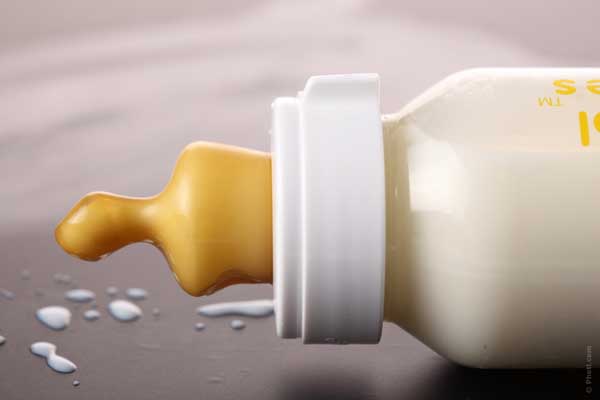Milk & Kids: 5 Most Common Myths
Many mothers ask a variety of questions about the benefits of milk for kids. Lack of information often gives rise to many myths. Let’s try to figure it out!
 Mother’s milk is the first product that a baby tastes in life. After 6 months, sour-milk products also appear in the children’s menu: cottage cheese, yogurts, and kefir will play a key role in the child’s diet. However, a lot of myths are associated with dairy products and distributed on various online forums and in personal conversations. Fortunately, the most common of these myths are just delusions.
Mother’s milk is the first product that a baby tastes in life. After 6 months, sour-milk products also appear in the children’s menu: cottage cheese, yogurts, and kefir will play a key role in the child’s diet. However, a lot of myths are associated with dairy products and distributed on various online forums and in personal conversations. Fortunately, the most common of these myths are just delusions.
Myth #1. If you give milk to your child, he/she will get enough calcium
Such a statement is only partially true. To get a daily norm of calcium (900 – 1000 mg), a child aged from 3 to 7 years needs to drink 750 ml of milk every day. Firstly, not every child can drink 3 cups of milk every day, and secondly, the body needs vitamin D to absorb calcium. There is too little of it in milk; there is a little more in fatty dairy products such as cheese, sour cream, butter, but still not enough. In addition, vitamin D is synthesized in human skin under the influence of ultraviolet radiation, but to get the right dose of this vitamin, you must be in the sun for at least 30 minutes a day. But how to do this, if there are not so many sunny days, and in winter it is completely dark for most of the day? What conclusion can be made?
That’s right: a child needs an additional source of vitamin D, and it is better when it comes from the same dairy products, specially enriched with vitamin D.
Myth #2. Long shelf life indicates that there are no living bacteria in the yogurt and it contains preservatives
This is not true! Modern production technology allows to obtain fermented dairy products with a shelf life of 30 days or more, while maintaining the right amount of lactic acid bacteria. With the high quality of milk, the “closed” production process (this means that the product does not come in contact with the environment during production), strict food safety and hygiene control, harmful microorganisms do not enter the product, it can be stored at a temperature of +2-6 C and stay fresh and healthy for the entire shelf life!
When buying, the main thing is to pay attention to the integrity of the package, the expiration date and the storage conditions of the product in the store. Fresh dairy products with live bacteria must be stored strictly in the refrigerator!
Myth #3. Children older than 3 years should not be given dairy products every day: the child has grown and no longer needs milk
This is a real myth! A person needs dairy products at any age – they contain the necessary nutrients for the body – proteins, fats, carbohydrates, vitamins and minerals. Milk protein is a source of essential amino acids, it has a high nutritional value at a low calorie content, and dairy products are also a source of phosphorus and, of course, calcium, which are extremely necessary for a growing body, for the correct formation of the skeleton and muscle development.
It is impossible to exclude them from the daily diet, since it will be very difficult to get the amount of calcium necessary for proper growth, for healthy bones and teeth without milk and sour-milk products. Dairy products are an integral part of a daily balanced diet and, in accordance with the WHO recommendations, it is necessary to consume 3 servings of dairy products daily.
Myth #4. Yoghurts cooked at home are more useful than bought at a store
At first glance, it seems that this should be true because almost all dishes prepared at home seem to be tastier and we know exactly how and what they are made of. However, for the proper fermentation of milk and the preservation of all beneficial bacteria, it is necessary to strictly observe the temperature regime. At home, it is very difficult to do this, and it does not mean that a home-made yogurt will contain the right amount of beneficial microorganisms. Moreover, along with them, there is the risk of “bad” bacteria, which are contained in the air in large quantities and can enter the product.
In the modern production process, hygiene is strictly controlled, which eliminates the ingress of unnecessary microorganisms into the product. In industrial conditions, not only the number of beneficial bacteria is thoroughly controlled, but also the quality of milk and its fat content, which is of great importance for regulating the temperature regime and the timing of fermentation.
Myth #5. If a kid has lactose intolerance, he/she should not be given any dairy products
The concept of lactose intolerance is hardly clear to the one who has never encountered it. They just drink milk and do not really think about its composition. “Lactose” is a natural carbohydrate found in milk. In order for lactose to be absorbed, there is an enzyme with a similar name in the human body, “lactase”. In some children, this enzyme is not enough from birth, so their body does not absorb well lactose and, therefore, milk.
But this is not the reason to completely abandon milk and dairy products. In fermented dairy products, for example, in yogurt, its amount is lower than in milk: when beneficial bacteria ferment milk, they break down lactose. And when cottage cheese and cheese are produced, a significant amount of lactose completely disappears along with whey, which is separated from the product, so they can also be given to a child with intolerance to milk sugar (lactose). Remember that eating habits are shaped in the child in the first years of their life.
Therefore, if you want your child to eat balanced food and love dairy products in the future, instill healthy habits from childhood. Hearty cottage cheese with fruit for breakfast, a glass of thick yogurt in the afternoon and a cup of milk with homemade oatmeal cookies in the evening will surely appeal to children and can perfectly replace sweets or cakes.




